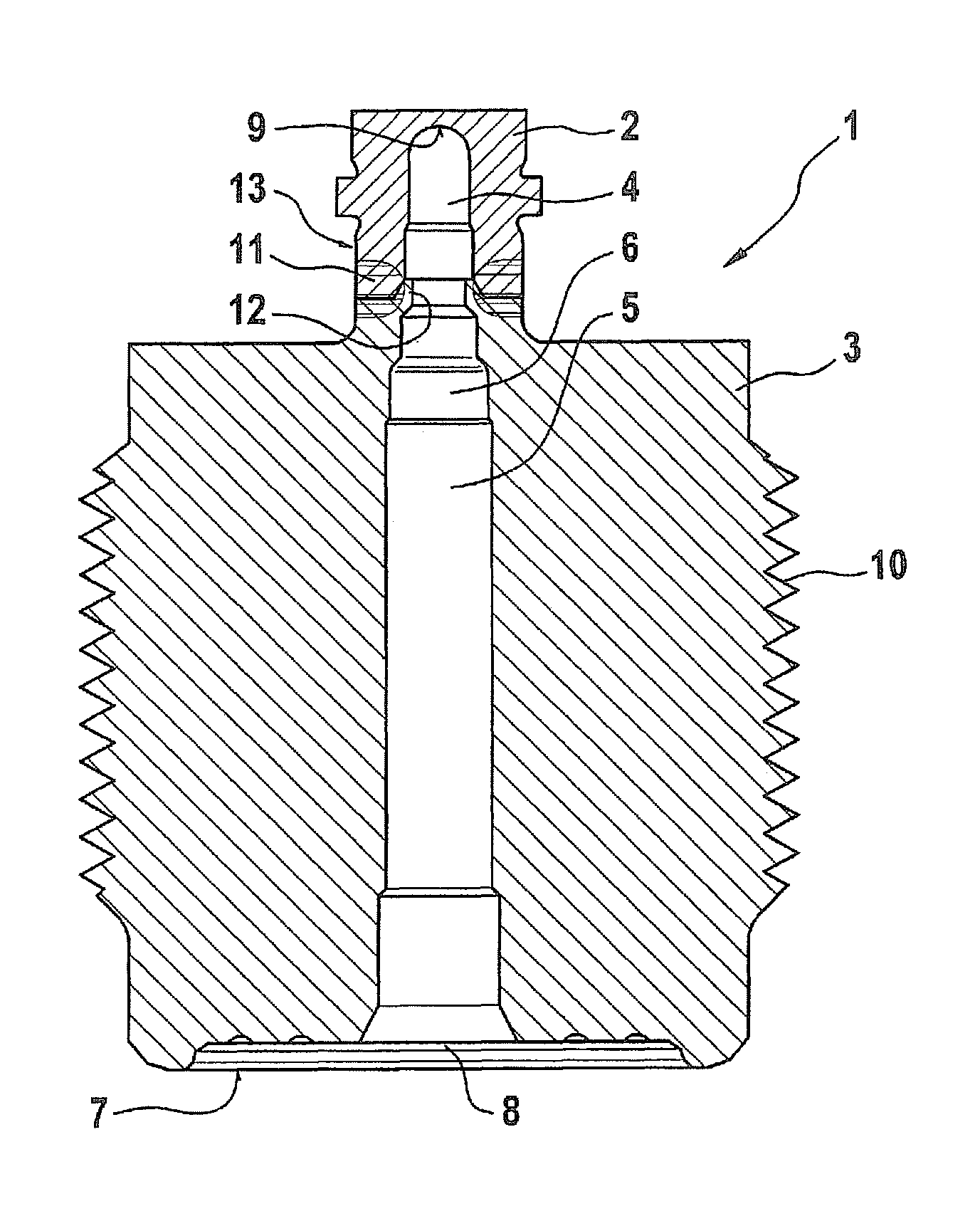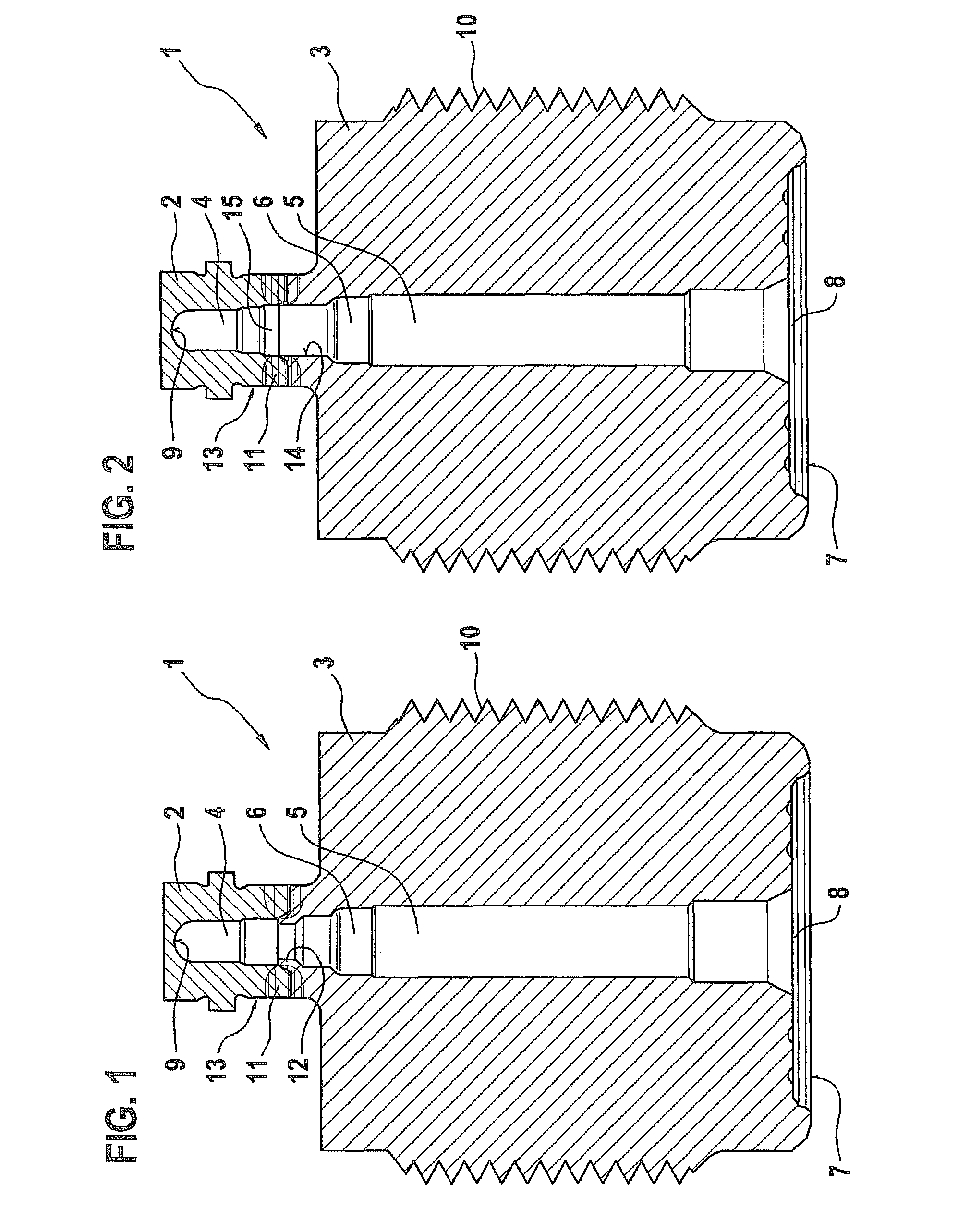Method for producing a pressure sensor assembly and pressure sensor assembly
a technology of pressure sensor and assembly, which is applied in the direction of fluid pressure measurement, fluid pressure measurement by electric/magnetic elements, instruments, etc., can solve the problems of reducing the stability of welding connection, thereby of the entire pressure sensor assembly, and thereby of the pressure sensor assembly, so as to reduce the stress of welding connection, reduce the cost, and reduce the effect of stress
- Summary
- Abstract
- Description
- Claims
- Application Information
AI Technical Summary
Benefits of technology
Problems solved by technology
Method used
Image
Examples
Embodiment Construction
[0021]FIG. 1 shows a cross section through a pressure sensor assembly 1 according to a first production step. Pressure sensor assembly 1 is made up of a sensor housing element 2 and a base housing element 3. Sensor housing element 2 has a first recess 4 and base housing element 3 has a second recess 5. Sensor housing element 2 is situated in such a way with respect to base housing element 3 that recesses 4 and 5 are situated coaxially with respect to each other, and thus form a continuous recess 6. Recess 4 is developed as a blind opening, and is thus only open in the direction of recess 5. By contrast, recess 5 reaches through base housing element 3 completely, so that continuous recess 6 ends in it on the side of sensor housing element 2, and on the side of base housing element 3 it opens out into a side surface 7 of pressure sensor assembly 1, and thus a connecting opening 8 is developed.
[0022]At the lowest point of recess 6, that is, in the region of sensor housing element 2, a ...
PUM
| Property | Measurement | Unit |
|---|---|---|
| pressures | aaaaa | aaaaa |
| pressure | aaaaa | aaaaa |
| area | aaaaa | aaaaa |
Abstract
Description
Claims
Application Information
 Login to View More
Login to View More - R&D
- Intellectual Property
- Life Sciences
- Materials
- Tech Scout
- Unparalleled Data Quality
- Higher Quality Content
- 60% Fewer Hallucinations
Browse by: Latest US Patents, China's latest patents, Technical Efficacy Thesaurus, Application Domain, Technology Topic, Popular Technical Reports.
© 2025 PatSnap. All rights reserved.Legal|Privacy policy|Modern Slavery Act Transparency Statement|Sitemap|About US| Contact US: help@patsnap.com


